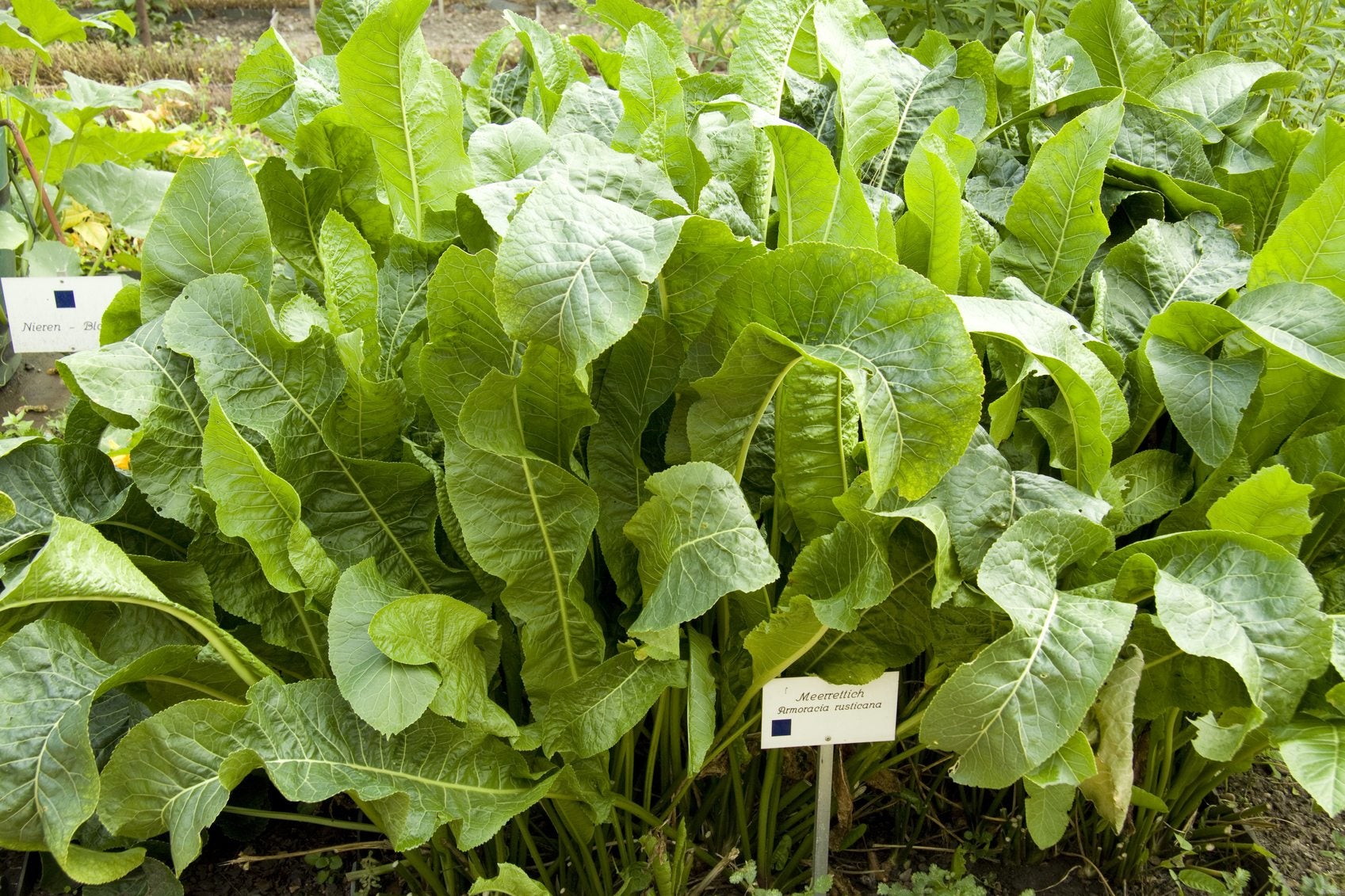
Horseradish (Armoracia rusticana) is an herbaceous perennial in the family Brassicaceae. Since the plants do not produce viable seeds, propagation of horseradish is via root or crown cuttings. These hardy plants can become quite invasive, so dividing horseradish plants becomes a necessity. The question is when to split horseradish roots. The following article contains information on how to divide a horseradish plant and other useful information on horseradish root division.
When to Split Horseradish Roots
Horseradish is suited for growing in USDA zones 4 through 8. The plant grows best in full sun to partial sun in warmer regions, in almost all soil types, provided they are well-draining and highly fertile with a pH of 6.0-7.5 and thrive in cooler temperatures. Horseradish root division should occur when the leaves have been killed off by frost or late in the fall in warmer regions. If you live in a really warm area where ground temps stay above 40 degrees F. (4 C.) year-round, horseradish can be grown as an annual and roots will be harvested and stored in the refrigerator until propagation of horseradish in the spring.
How to Divide a Horseradish Plant
Prior to dividing horseradish plants in the fall, prepare the planting site by weeding and raking out any large pieces of detritus. Amend the soil with 4 inches (10 cm.) of compost and coarse sand and dig it into a depth of one foot (31 cm.). Loosen the soil around the plants, about 3 inches (8 cm.) out from the crown and down 10 inches (25 cm.) into the soil. Lift the plants carefully from the ground with a fork or shovel. Brush off the large clumps of soil from the roots and then wash them with a garden hose to remove the remaining dirt. Let them dry in a shaded area. Wash a sharp gardening knife with hot soap and water, then sanitize with rubbing alcohol to remove any pathogens that might infect the roots prior to cutting into them. Dry the knife with a paper towel. Propagation of horseradish is done with either root or crown cuttings. Regions with short growing seasons should use the crown method. To create crown cuttings, slice the plant into equal portions with an even share of foliage and roots. For root cuttings, slice the slender side roots into 6 to 8 inch (15-20 cm.) long sections, each with a diameter of around ¼ inch (6 mm.). In your prepared planting site, dig a hole that is deep enough to accommodate the root of the cutting. Plant the new horseradish plants 2 feet (61 cm.) apart in rows that are 30 inches (76 cm.) apart. Backfill around the plants until the root is covered. If using crown cuttings, fill in until the base of the stems are even with the rest of the bed. Water the cuttings in well, down to a 4 inch (10 cm.) depth. Lay 3 inches (8 cm.) of mulch down between the cuttings, leaving an inch (2.5 cm.) between the mulch layer and the plants to help retain moisture. If you lack rain during the winter months, water each week down to a depth of an inch (2.5 cm.). Allow the soil to dry completely between watering.
Sign up for the Gardening Know How newsletter today and receive a free copy of our e-book "How to Grow Delicious Tomatoes".

Amy Grant has been gardening for 30 years and writing for 15. A professional chef and caterer, Amy's area of expertise is culinary gardening.
